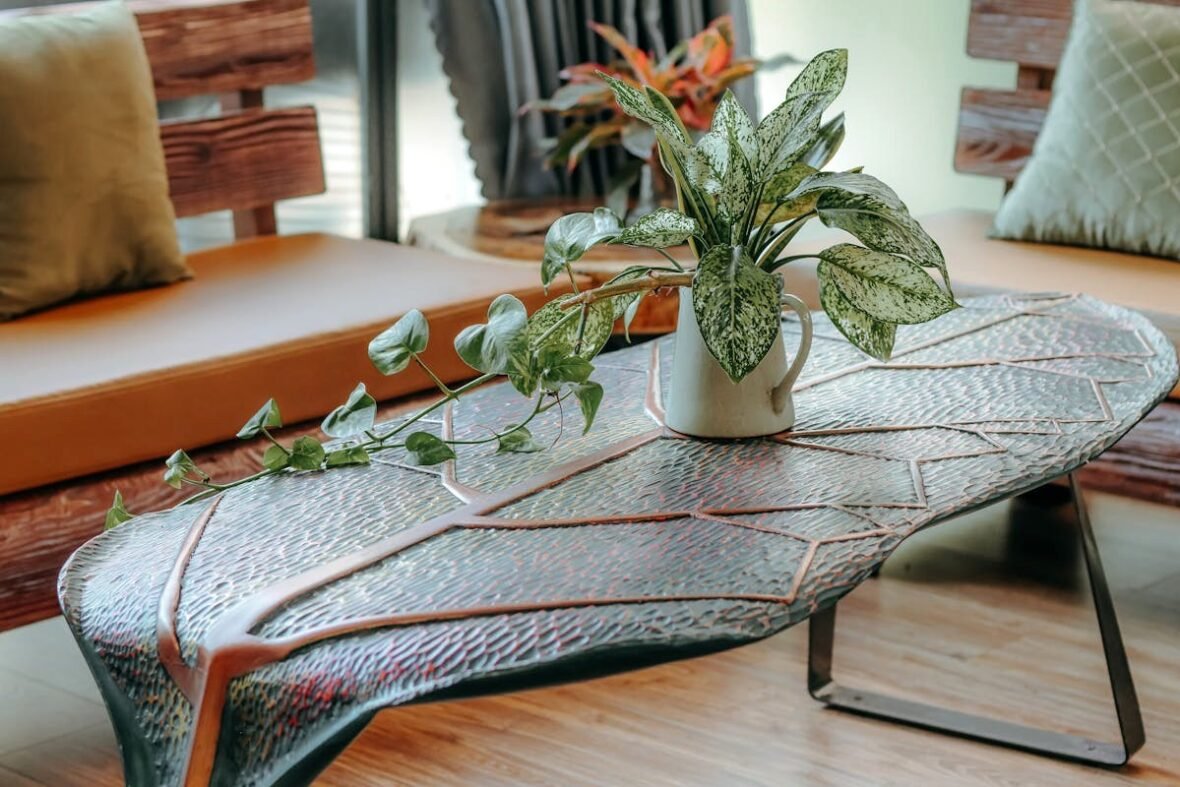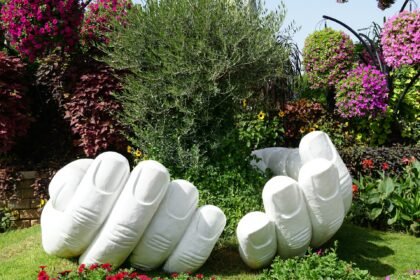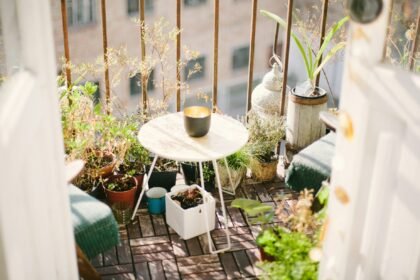The universal love for indoor plants reflects not only a stylistic choice but also an appreciation for the psychological and aesthetic benefits that indoor plants provide. As urban living spaces become more common, the longing for a connection to nature has pushed people to seek ways to bring the outdoors in.
Indoor plants serve as a vital component in contemporary interior design, offering a refreshing contrast to the often sterile and manufactured materials commonly used in construction and decor. The integration of plants within living spaces not only enhances the aesthetic appeal but also contributes to emotional well-being. Numerous studies have shown that having plants indoors can reduce stress levels, improve air quality, and increase productivity, creating a calming atmosphere that fosters relaxation and focus.
Additionally, various cultures have unique traditions and practices regarding the use of houseplants. For instance, in many Asian cultures, specific plants are believed to bring good fortune and prosperity, fostering a deeper emotional resonance with plant care. Similarly, in Mediterranean countries, plants are often seen as essential elements of home decor, offering a vibrant touch that reflects the natural landscape. This global embrace of indoor flora signifies a collective understanding of the profound impact that nature has on our daily lives, regardless of geographical or cultural differences.
As we explore the rich tapestry of cultural approaches to indoor plants, the enduring fascination they inspire becomes clear. The presence of greenery is not merely about decoration; it symbolizes an innate desire to connect with nature, to cultivate calmness amidst chaos, and to create spaces that promote health and happiness. By examining how different cultures celebrate this connection, we can appreciate the universal love for indoor plants that transcends boundaries.
Mediterranean Charm: Potted Citrus Trees
Potted citrus trees have long been a cherished aspect of Mediterranean home decor, embodying the rich heritage and vibrant lifestyle of the region. These plants, particularly varieties such as lemons, oranges, and limes, are not only visually appealing but also symbolize abundance, freshness, and a connection to nature. The tradition of incorporating citrus trees into indoor settings dates back centuries, as these plants thrive in the sunny Mediterranean climate and have become emblematic of the area’s cultural identity.
Historically, citrus fruits were celebrated not only for their culinary uses but also for their aesthetic and aromatic qualities. In Mediterranean households, they are often placed in terracotta pots, which enhance their visual impact and complement the earthy tones typical of the region’s architecture. The bright, vibrant colors of the fruits along with the lush green foliage create a striking contrast that serves to uplift the ambiance of any space.
To bring this Mediterranean charm into your own home, consider incorporating potted citrus trees in your decor. Start by selecting appropriate pots that reflect the rustic nature of Mediterranean design, such as those made from clay or ceramic. Ensure that the pots have proper drainage to maintain the health of the plants. Position these trees near windows or in sunlit areas as they require plenty of light to flourish. Additionally, enhance their aesthetic appeal by planting them alongside herbs or other companion plants, which can create a lively, cohesive display.
By nurturing potted citrus trees indoors, one not only gains a beautiful decor element but also invites the essence of the Mediterranean lifestyle into their living spaces. The refreshing fragrances and vibrant colors can transform any room, offering a sense of tranquility and joy reminiscent of sunny Mediterranean landscapes. Embracing this practice can provide a fresh perspective on indoor gardening and home decor, fostering a deeper connection with nature.
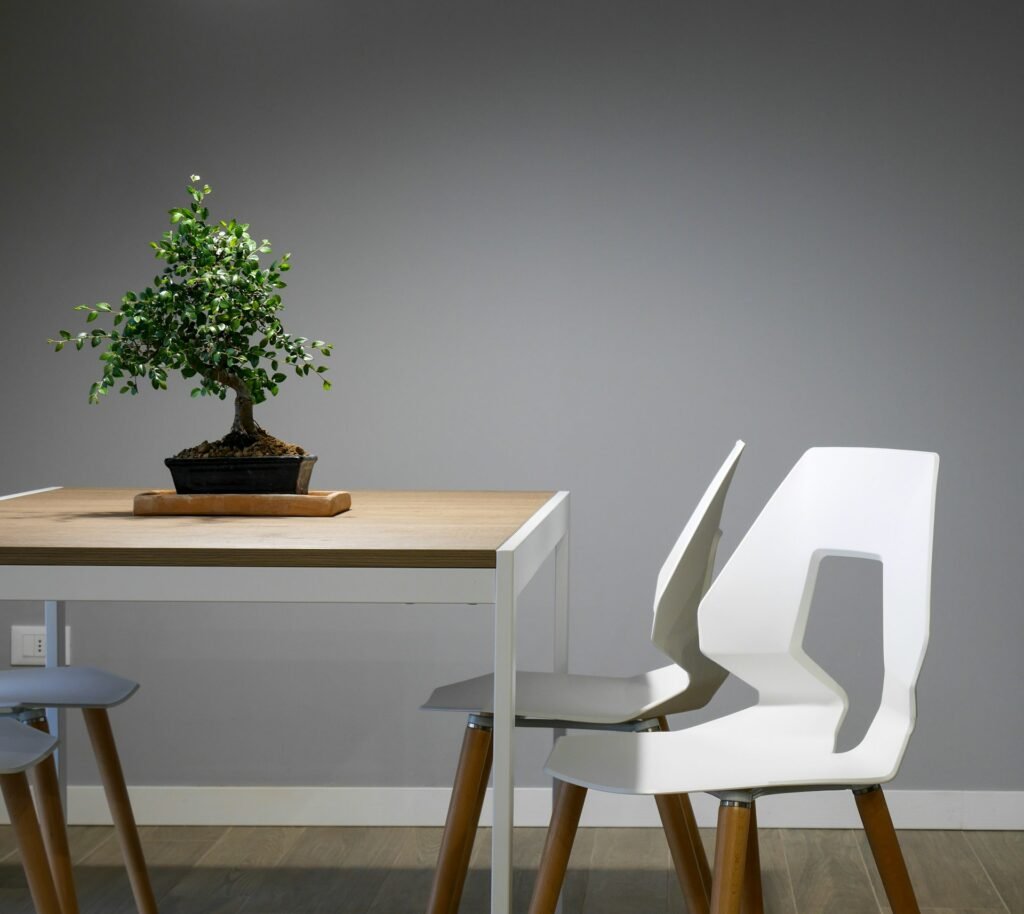
Asian Zen: Indoor Plants and Minimalism
The tradition of bonsai, which originated in China and was later refined in Japan, is a profound intersection of art, philosophy, and nature. This ancient practice involves cultivating small trees in pots to create an aesthetically pleasing miniature landscape. Bonsai is not merely about growing a tree; it is an expression of a deep-rooted philosophy that emphasizes patience, mindfulness, and harmony with nature. Each bonsai tree reflects its caretaker’s dedication and mindfulness as the cultivation process can take years to produce a mature form. The attention to detail in pruning and shaping requires both skill and a deep connection to the plant.
In modern home decor, the principles of bonsai can significantly influence minimalist design. Asian Zen aesthetics advocate for simplicity and tranquility, promoting a serene living environment that encourages reflection and calmness. By incorporating bonsai into interior spaces, individuals can embrace this philosophy. The small size of bonsai trees allows for easy placement in a variety of settings, from desktops to shelves, creating focal points without overwhelming the space. The subtle presence of these trees invites contemplation and serves as a reminder of life’s fleeting beauty.
To integrate the essence of bonsai and minimalism into contemporary home decor, consider selecting one or two well-groomed bonsai specimens to highlight in a designated area. Surround them with natural materials, such as wood or stone, and limit additional decor to retain a clean aesthetic. Soft lighting can enhance the tranquil ambiance, allowing the intricacies of the bonsai to become a meditative focal point. Furthermore, maintaining bonsai encourages a routine of care and reflection, thus enriching the interplay between nature and the indoor environment. As individuals seek to bring a sense of calm and balance into their homes, the incorporation of bonsai elegantly exemplifies how ancient traditions can resonate within modern contexts.
Latino Vibrance: Tropical Indoor Plants and Colorful Motifs
Latino cultures have a rich tradition of integrating nature into the home, particularly through the use of vibrant tropical plants that not only add a splash of color but also promote a sense of life and energy. These plants serve a dual purpose; they are both decorative elements and symbols of cultural heritage. Common examples include the hearty pothos, the elaborate monstera, and the striking bird of paradise, each contributing a unique aesthetic that reflects the warmth and vibrancy inherent in Latino households.
The decorative techniques employed in this cultural context often involve an interplay of color, texture, and arrangement. For instance, groups of various plants are typically arranged to create a lush, green sanctuary, while vibrant pots in artisans’ designs serve as additional decorative features. These colorful containers can range from traditional ceramic pots adorned with folkloric patterns to brightly painted containers that celebrate local craftsmanship. This attention to detail and use of handmade items adds a personal touch to the décor, making each setting distinct and inviting.
In many Latino homes, the incorporation of indoor greenery transcends mere decoration; it serves a symbolic purpose. Plants are often associated with blessings, family unity, and the celebration of life, making them an integral component of festive occasions. During holidays and gatherings, homeowners might enhance their indoor spaces with additional floral arrangements or themed motifs, creating an atmosphere filled with joy and cultural significance. Such practices not only beautify the home but also elevate the spirit of family gatherings, reflecting the importance of community and shared experiences.
By embracing tropical plants and colorful motifs, Latino cultures artfully bring the outside in, creating invigorating spaces that reflect both their heritage and their love for nature.
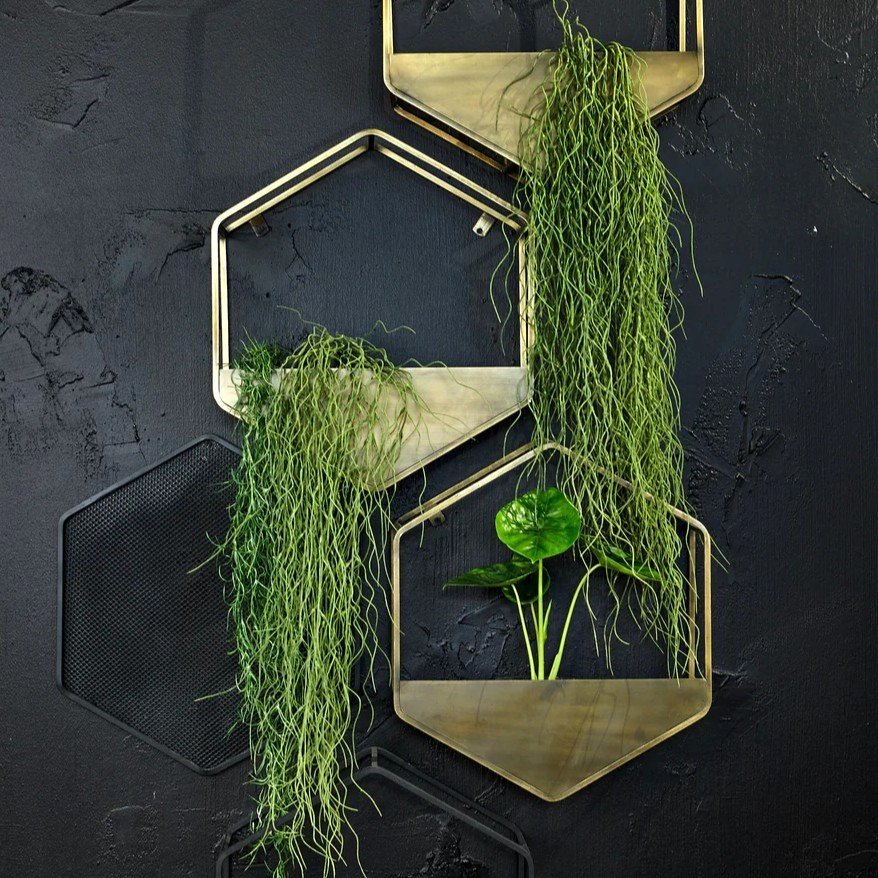
African Vibes: Hanging Indoor Plants and Their Significance
In many West African cultures, the use of hanging planters holds a deep-rooted significance that transcends mere aesthetics. Plants are not only a source of beauty but also embody cultural values and traditions. The art of suspending plants within homes is often tied to communal practices and historical narratives, showcasing the connection between people and their environment. Hanging planters serve a dual purpose—they beautify living spaces while fostering a sense of unity and belonging within communities.
Materials used in crafting these planters can vary widely, encompassing natural fibers, clay, and even repurposed objects, which reflect the resourcefulness and creativity inherent in African culture. For instance, woven baskets are a popular choice, often handmade by local artisans. This process not only supports local craftsmanship but also reinforces communal bonds as families participate in the creation of these decorative items. Moreover, the symbolic meaning of the plants themselves amplifies their value: many plants are associated with specific ancestors or cultural practices, linking the physical space with spiritual significance.
Incorporating hanging planters into modern home decor can be achieved through thoughtful selections and placements. Homeowners can choose plants that align with their aesthetic preferences while simultaneously honoring cultural significance. For instance, using a handwoven basket planter hung near a window can introduce not just greenery, but also the warmth of African artistry into the home. Additionally, arranging several hanging planters at varying heights can create a visually dynamic centerpiece, adding depth to any interior space.
Overall, the use of hanging planters in West African culture provides a fusion of meaning, creativity, and community. By embracing these practices, individuals can bring a slice of cultural heritage into their homes, enriching their surroundings while celebrating the rich biodiversity that these plants represent.
Nordic Simplicity: Scandi Style and Indoor Plant Selection
The Nordic approach to interior design, often characterized by simplicity, functionality, and minimalism, harmonizes beautifully with the incorporation of indoor plants. In Scandinavian homes, where natural light can be limited, the selection of plants that thrive in low-light conditions becomes essential. Popular choices include species such as the ZZ plant, pothos, and snake plants. These resilient varieties not only enhance the aesthetic appeal of the space but also contribute positively to indoor air quality, allowing homeowners to embrace a healthier living environment.
Emphasizing a serene and cozy atmosphere, the Scandi style leans towards greenery that is easy to care for. This encourages a sense of tranquility within the home. Succulents and ferns can also be excellent candidates for this environment, as they establish a delicate balance between minimal decoration and natural vibrancy. By placing these plants strategically on windowsills or shelves, individuals can create interesting focal points without overwhelming the simplicity that defines Nordic aesthetics.
To maintain this harmonious integration between indoor plants and home decor, it’s advisable to adopt a straightforward care routine that emphasizes the plants’ adaptability to lower light conditions. Regularly dusting leaves and ensuring proper watering schedules help keep the plants healthy, sustaining their visual appeal. Utilizing lightweight planters in neutral tones complements the understated yet effective design principles typical of Scandinavian homes. This not only enhances the minimalist look but also promotes the concept of bringing nature indoors in a seamless manner.
Ultimately, the combination of thoughtful plant selection and minimalist design captures the essence of Nordic simplicity. The right choice of greenery supports both the aesthetic and atmospheric goals, reinforcing the connection between indoor spaces and the natural world. This thoughtful integration of plants into Nordic decor exemplifies how cultures can harmoniously blend nature with their living environment.
LOVE NEUTRALS? BROWSE MINIMALIST PLANTERS
Middle Eastern Oasis: Date Palms and Aromatic Herbs
The incorporation of indoor plants within Middle Eastern homes serves as both an aesthetic and cultural motif, reflecting the region’s rich heritage and connection to nature. Among the most celebrated indoor plants are date palms and a variety of aromatic herbs that elevate the ambiance of living spaces while inspiring a sense of tranquility and serenity.
Date palms, a symbol of hospitality and sustenance in Middle Eastern culture, are often creatively positioned within homes to mimic the lush environments of their natural habitats. Their tall and stately form provides a striking visual element, creating an indoor oasis that conjures images of desert landscapes. The presence of date palms not only enhances the interior decor but also fosters a connection to the land, alluding to the importance of these trees in local traditions and cuisines. Homeowners often choose pots that complement traditional designs, further enriching the cultural tapestry of the space.
Aromatic herbs such as mint, basil, and thyme hold significant cultural value, often used in culinary practices and traditional remedies. In Middle Eastern households, these herbs are commonly planted in decorative pots placed on windowsills or kitchen counters, allowing for easy access while promoting freshness throughout the home. The fragrant leaves provide a sensory delight that engages residents and guests alike, enhancing both the visual and olfactory elements of the indoor space.
To recreate an Arabian oasis within one’s living space, consider combining various plant types, such as a mix of date palms and aromatic herbs, in a cohesive color scheme that resonates with the cultural aesthetics. Using earthy tones and natural materials for plant pots can further harmonize the setup. Incorporating drip irrigation systems can also facilitate the maintenance of these plants, ensuring that they thrive indoors while contributing to the overall well-being of the environment. Through thoughtful placement and selection of indoor plants, one can bring the spirit of the Middle East into the modern home.
American Eclecticism: A Melting Pot of Styles
American culture has always been a tapestry woven from numerous threads of tradition and innovation, particularly evident in the realm of interior design. The eclecticism that characterizes American home decor encompasses a wide array of influences, resulting in style combinations that reflect diverse cultural backgrounds. Among the most enduring trends is the integration of indoor plants, which not only enhance aesthetic appeal but also promote well-being and environmental consciousness.
The concept of the “urban jungle” has gained traction in recent years, particularly in metropolitan areas where space is often limited. Homeowners and renters alike are increasingly embracing the idea of cultivating green spaces within their residences. This trend often includes an assortment of indoor plants such as ferns, succulents, and various species of palms, which serve to create a lush, vibrant atmosphere. The integration of plants into living spaces is not merely a decorative choice; it represents a deeper connection to nature and a commitment to sustainable living.
Terrariums are another popular element of American indoor plant decor. These glass encapsulations allow for a microcosm of nature to thrive indoors and are especially appealing for those who appreciate design as well as functionality. Terrariums can be personalized with a diverse selection of plants sourced from various cultural backgrounds, thus creating a showcase of ecological variety and design. By incorporating elements such as colorful moss, decorative stones, and culturally-inspired figurines, individuals can express their unique identities while celebrating the rich tapestry of influences that characterize American life.
The eclectic nature of American home decor, particularly through the lens of indoor plants, illustrates a broader cultural phenomenon. By merging various styles and traditions, individuals can create personalized spaces that reflect their identity and values, while also enhancing their overall living experience.
Embracing Indoor Plant Life Across Cultures
Throughout history, the integration of indoor plants into residential spaces has transcended geographical and cultural boundaries, signifying a universal appreciation for nature’s beauty. From the elaborate ferns found in Victorian parlors to the minimalistic succulents favored by modern Japanese interiors, indoor plants serve not only as aesthetic enhancements but also as vital contributors to well-being. Cultures around the world have adopted varying philosophies and practices to incorporate greenery into their living spaces, highlighting the diverse ways in which plant life can reflect values, beliefs, and lifestyles.
The symbolism attached to indoor plants varies across cultures, yet a common thread remains: the pursuit of tranquility, freshness, and vibrancy within our own homes. For instance, Feng Shui practices underline the importance of specific plants in promoting positive energy, while Mediterranean homes commonly embrace herbs that serve both culinary and decorative purposes. These examples illustrate that indoor plants can fulfill multifaceted roles, embodying both functionality and beauty within interior design.
The influence of cultural aesthetics can serve as inspiration for individuals seeking to enhance their indoor environments. Adapting these cultural insights allows one to create an indoor atmosphere that resonates on a personal level, creating a deeper connection to both the plants and their surroundings. Embracing plant life across cultures is not merely about decoration; it is about creating a refuge that embodies personal style and cultivates well-being. The act of incorporating indoor plants reflects a human affinity for nature, inviting a sense of peace and connection into our everyday lives.

